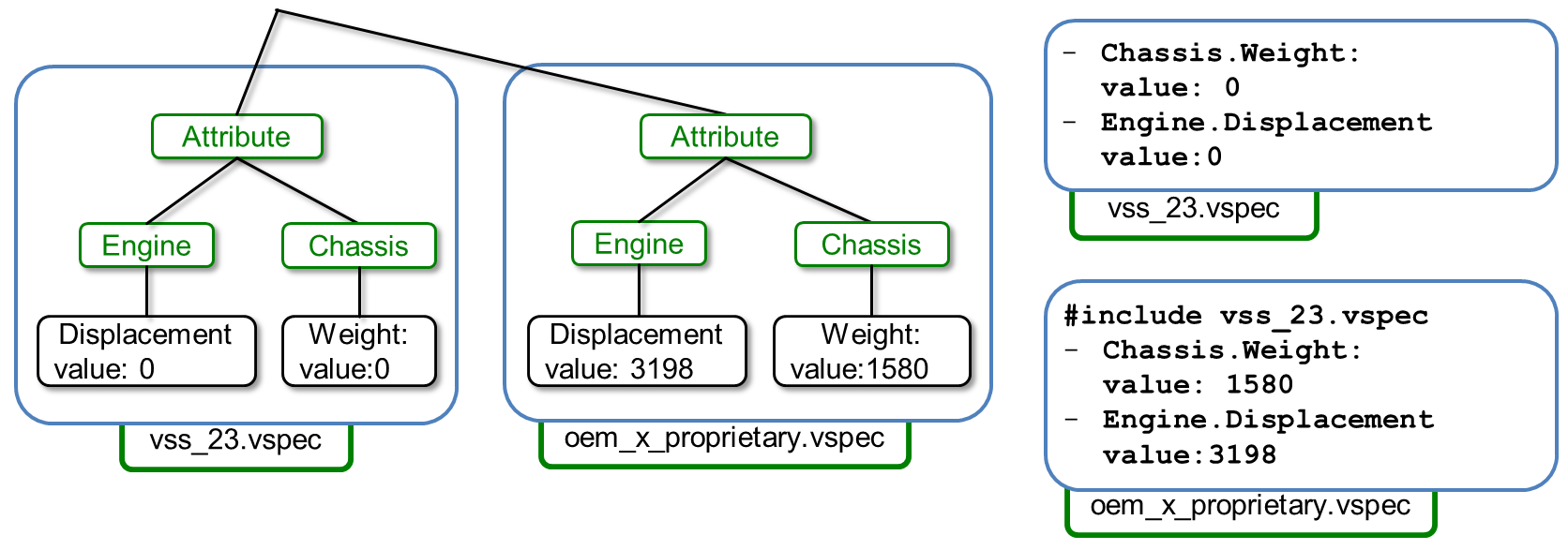Private Branch
The private branch offers a way to clearly separate OEM specific definitions and the specification. It helps adapting the specification to the needs of the organisation.
Extending and overriding Data Entries
The core signal specification can be extended with additional signals through the use of private branches, as is shown in Fig 3.
 Fig 3. Extended signals
Fig 3. Extended signals
In this case the core signal specification, vss_23.vspec is
included by a OEM-specific master vspec file that adds the two
proprietary signals Private.OEM_X.AntiGravity.Power
and Private.OEM_X.Teleport.TargetLoc.
Signals can, in a similar manner, be overridden and replaced with a new definition, as is shown in Fig 4.
 Fig 4. Overridden signals
Fig 4. Overridden signals
In this case, the GearChangeMode signal provided by the core
specification lacks an additional semi-automatic mode featured by an
OEM-specific vehicle.
By having an OEM master spec file, oem_x_proprietary.vspec
include the core spec file, vss_23.vspec and then overriding
the original GearChangeMode signal and add the semi-auto
element as an enumerated value
DECLARING VS. DEFINING ATTRIBUTES
The signal extension mechanism described above is also used to declare an attribute in one vspec file and define it in another. This is used to setup a attribute structure standard in the core specification that is to be defined on a per-deployment (vehicle) basis.
An example is given in Fig 5.
 Fig 5. Declaring and defining attributes
Fig 5. Declaring and defining attributes
The Attributes.Engine.Displacement and Attributes.Chassis.Weight attributes
are declare in the vss_23.vspec file with a default value of zero.
A project/vehicle specific vspec file, oem_x_proprietary.vspec
then overrides the attributes with the correct values.